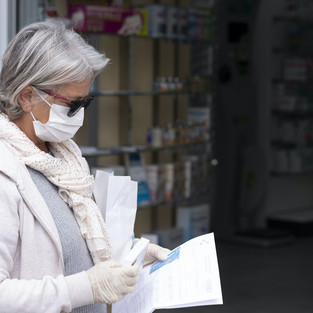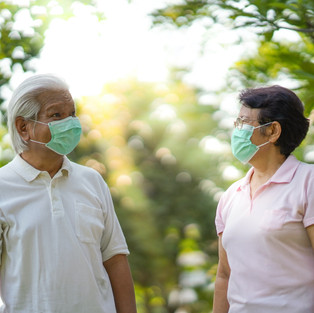My Big Worry: People My Age, I am 85, Will Be Indoors Indefinitely
- Katharine Esty
- May 21, 2020
- 2 min read
Updated: May 21, 2020
The news today is all about getting back to normal and huge differences of opinion about how fast to reopen. But everyone seems to agree that the most vulnerable must continue to stay at home. The most vulnerable may mean people who are over 65. In Massachusetts where I live, Governor Baker suggested on May 18th in his speech they should be staying home for now. But definitely, vulnerable means people over 80. We old folks are constantly being told, “Take care and stay vigilant.” “You need to continue to stay at home.” “It is not safe for you to go out.”

Let’s talk about who’s truly vulnerable in the pandemic: people who live in nursing homes. One-third of those who have died of the virus in the US lived at a nursing home. Clearly, there needs to be more oversight of nursing homes. But how many of you know that only 5% of old people live in nursing homes? The other 95% of old people live in cities and towns, homes, and apartments, in all sorts of levels of health and activity.
We seem to be lumping every one of a certain age as “old and vulnerable” and have decided that the safest course of action is to keep them in their homes. Center for Disease Control (CDC) guidelines encourages those over 60 to “stay at home as much as possible.” And some people imply that it might make sense for all old people to stay at home indefinitely. For our protection.
This is my Big Worry.
To me, the long-term confinement of us old folks isn’t sensible or feasible. I say, “Hey, I am 85. I don’t want to stay in my home any longer. I may have only a year or two and I want to be out and about!” I’ll take appropriate safety precautions, but I want to decide where I go and when.
Left to Right, photos by © luciano, © PordeeStudio, © Mediteraneo on stock.adobe.com
This potential discrimination towards the elderly is particularly galling to me because my mission for the last five years had been to update our views about the aged. We need to stop seeing people in their seventies, eighties, and nineties though the lens of disproven stereotypes — as people who are all declining, unproductive, boring, and unhealthy. We can’t treat all people who are old as a single group.
Today’s old people are different from all earlier generations. Not only because there are more of us, and we are living longer, but because so many of us are quite healthy and doing all kinds of exciting things. We climb mountains, play in orchestras, and raise money for charity. We are Pelosi, Biden, and Fauci. We are caretakers of others and run soup kitchens.

And even if we are not doing, old people deserve the right to choose for themselves if they want to stay home or if they want to come and go like everyone else. Old people have the right to be in the community and to be active on the main stages of life. I, for one, will do what I can to prevent any directives or guidelines that try to shut us away just on the basis of our age.










Recalling what our Surgeon General back in the '80s said about elderly females and the AIDS epidemic, that older women couldn't get the disease if they tried, I know we are definitely a target this time around, so choose to be selectively cautious, especially as I am chief caretaker of a husband with dementia. Suddenly any services I might have employed or turned to in that role have vanished, so I am now protecting us both, as well as assuming the tasks that formerly were his. Of course this is with the aid of four children who forbid us to enter a store, but help with other burdens: welcome advice, attention, and newsiness (phone calls, surprise gifts, weekly Zooms). Being…
No one should expect to be quarantined indefinitely. It is both unfair and unnecessary to keep "elders" at home.
Nursing homes are a special case. COVID has exposed the weaknesses of nursing home management and practice. Few skilled-nursing residents can be out and about, but they are vulnerable to COVID via staff, vendors and family members. Once in the facility, the virus can spread rapidly if the facility is not on top of its game. When the virus is ultimately controlled, nursing homes can gradually allow residents freedom of movement and can admit visitors safely.
Less-intense congregate living environments, such as personal care homes and assisted living facilities, with or without independent-living sections, have residents who are more mobile. Thes…